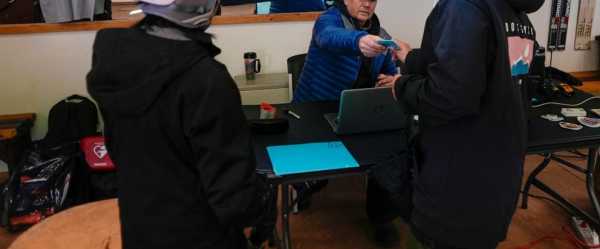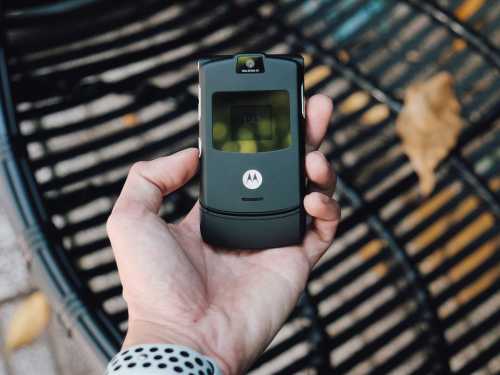
LA VETA, Colorado — It’s been the longest wait, their whole lives, in fact. But Race Lessar and Landen Ozzello are finally right where they want to be, on a snowy slope close to home, molding snow into a ski jump.
Their local ski mountain just reopened.
“I’m happy that it’s open for at least one year,” Lessar said. It opened as a nonprofit, and that may be the key. "I didn’t know that there was a hope,” he said.
His ties to the mountain are so close, he's practically named after it. His dad used to race here and named his son for what brought him joy. Chad Lessar first skied on hand-me-down gear, later worked summers at a nearby ranch to earn money for more nimble racing equipment.
“We’ve never been very rich,” Chad said of Huerfano, one of the poorest counties in the state. “Its nice to see a little area open up on the cheap,” he said. The ski runs here are short, but the fact it’s affordable just might be enough to keep it up and running.
Under the gaze of the imposing Spanish Peaks in southern Colorado, the 50-acre Parker-Fitzgerald Cuchara Mountain Park is the story of so many American ski areas, only the community was determined to change the script.
Ski resorts boomed in the 70s and 80s, emerging even in areas that didn't have the climate or workers to sustain them long-term. First-time ski resort owners took on debt and quickly filed for bankruptcy after a bad snow season. Ownerships transferred numerous times before resorts calcified into ghost towns.
But some communities are now finding a niche, offering an alternative to endless lift lines and soaring ticket prices. They're reopening, several as nonprofits, offering a mom-and-pop experience at a far lower cost than corporate-owned resorts.
“It’s not necessarily about drawing overnight or out-of-town guests, but about bringing positive economic impact and a source of physical and mental wellness for the community,” said Adrienne Isaac, marketing director for the National Ski Areas Association.
A DELAYED REOPENING
Cuchara shuttered in 2000 after years of mismanagement, unpredictable snow and bankruptcies. It was dead for 16 years, when a group of stubborn locals with fond memories of the mountain came together. When the last owner put it up for sale, the Cuchara Foundation gave the county a down payment and helped raise the remaining funds.
Going into this season, the work of readying was in full swing. Volunteers kept holding fundraisers. There were donation jars. Inheriting snowmaking equipment and lifts may sound good, said Ken Clayton, a board member at Panadero Ski Corporation, a sister nonprofit that runs operations. But both required expensive repairs, and then the refurbished chairlift didn’t even pass inspection. On top of that, it was a warm, dry winter. As the season wore on, the volunteers began to lose hope. “It just wasn’t going to happen because we didn’t have the snow,” Clayton said.
Finally, when cold air and snowstorms arrived in late winter, Cuchara's maintenance director had an idea. They welded old school bus seats to a car-hauling trailer and hitched it to a snowcat, a tractor with snow treads, then put out the word they would be towing people up the mountain. “We’re trying to give the community something because they’ve supported us for so long,” Clayton said.
And the community showed up.
GROWING ACCESS
There's no guidebook for how to reopen an abandoned ski area, especially as a nonprofit, so some community groups are making common cause, and learning from each other.
Will Pirkey had heard of a nonprofit ski area six hundred miles north in Wyoming, and sought them out as soon as he joined the volunteer board. The Antelope Butte Foundation had been running a nonprofit ski area in northern Wyoming since 2018 after a closure that lasted 15 years. With a limited, mostly volunteer staff, it opens Friday through Monday. Keeping skiing affordable, especially for children, is key to its mission.
For $320, a child can receive a season pass to the Wyoming mountain, rentals, and four lessons. The foundation covers families who can't afford the cost. They also host classes for area schools that introduce kids to cross country and downhill skiing.
Greybull Middle School Principal Cadance Wipplinger used to chaperone students to ski areas when she taught in a Montana town with a robust outdoor industry. But her students now mainly come from mining, railroad, and farming families with fewer resources.
“A high percentage of our kids would not be getting the opportunity if we weren't taking them,” Wipplinger said. “It opens up their world a little bit."
A FUTURE WITH SHORTER, WEIRDER WINTERS
If fond memories and volunteer spirit are essential to reopening an abandoned ski area as a nonprofit, so is snow, and its consistency dictates whether it can endure.
The Antelope Butte Foundation studied 30 years of snow patterns before committing to reopen, board president Ryan White said, but knew it would face ever-shorter winters. As greenhouse gas emissions warm the atmosphere, winter is growing shorter and there are also more dramatic swings, for example last year's snow drought in the Sierra Nevada followed by this year's record snowfall.
This season, Antelope Butte was buried in powder, said former Executive Director Rebecca Arcarese, but she knows other years won't be as abundant. Snowmaking could extend the season, but it's a tough decision for a mountain that doesn't have the personnel to open seven days a week.
“Does it give us two, three more weeks, or just two or three more days? And does that make sense to make that capital investment?” Arcarese asked.
In southeast Vermont, irregular snow has long plagued standalone Mount Ascutney. A local nonprofit reopened Ascutney after five years of closure. A few seasons ago, a storm dumped several feet of snow on the slopes, but a week later, rain washed it away.
“If you spend one hundred thousand dollars on making snow, your heart gets broken when it's washed down the mountain,” said Steve Crihfield, a board member of Ascutney Outdoors, the nonprofit that owns and manages the mountain.
So ski areas are dealing with climate risk by offering year-round activities from archery to concerts and weddings. But in a quiet town like La Veta, with limited outdoor winter activities and a population of fewer than 1000, there is just no substitute yet for snow sports.
On a late Sunday afternoon in March, energy pulses at the Mountain Merman Brewing Company — one of the few bars in town. Pints sling across the counter to construction workers wearing ski pants, while windburned teenagers — Lessar and his pals — nosh chicken barbecue pizza and play Battleship.
The shift is so busy, co-owner Jen Lind is having to help behind the bar. She hardly recognizes the energy in her brewery compared to its typically mellow pace at the end of a weekend.
“I think that comes right off the mountain,” Lind said. “People are excited to be out and about and having stuff to do.”
____
The Associated Press receives support from the Walton Family Foundation for coverage of water and environmental policy. The AP is solely responsible for all content. For all of AP’s environmental coverage, visit https://apnews.com/hub/climate-and-environment
Sourse: abcnews.go.com






